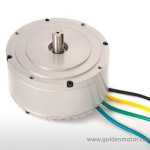John in CR said:
Overclocker said:
If it's a 3kw motor at 96V, then the same motor is a 1.5kw motor at 48V, and for thick mud is simply not going to be enough motor except maybe for a kids' bike.
Actually It's a square relationship (e.g. Benjamin Vedder explained it in
this post), so a 96V motor run at 48V, that's geared the same top speed, only is a 750W motor.
Or in your case @Overclocker, the HPM3000B will only be half as powerful @68V as when run @96V. If that's enough for you or not is something you must decide.
If I was you I'd probably look for a highher pole count/e.g. lower k/v motor...


